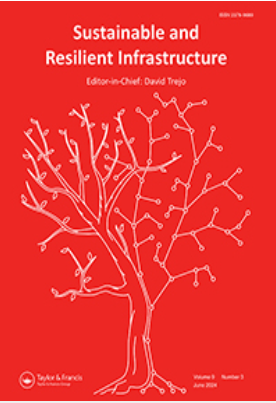脱钩净现值:通过持续捕捉弹性和适应性投资的价值来保护资产免受气候变化风险
IF 2.2
Q2 ENGINEERING, CIVIL
引用次数: 1
摘要
摘要人们越来越意识到,在评估实物资产和基础设施的长期投资时,基于贴现现金流的传统估值方法(使用恒定的风险调整贴现率)难以考虑气候相关风险。最糟糕的是,这些方法没有考虑到在恢复力和适应方面的投资所带来的众多财务效益,将这些支出归类为降低投资者回报的沉没成本。这种传统的估值方法鼓励投资者推迟或完全放弃对韧性和适应性的投资。解耦净现值(DNPV)方法将风险和风险降低措施以明确和令人信服的财务条款纳入项目估值。通过量化(i)资产风险敞口和(ii)通过前期投资减少此类敞口,DNPV重塑了风险降低措施的财务影响。因此,可以在项目层面的会计中充分评估适应和恢复能力等降低风险投资的好处,消除当今此类投资面临的重大障碍。本文章由计算机程序翻译,如有差异,请以英文原文为准。
Decoupled net present value: protecting assets against climate change risk by consistently capturing the value of resilient and adaptable investments
ABSTRACT There is growing awareness that traditional valuation methods based on discounted cash flows using constant risk-adjusted discount rates struggle to account for climate-related risks when assessing long-term investments in physical assets and infrastructure. Worst yet, such methods fail to consider numerous financial benefits accruing from investment in resilience and adaptation, categorizing such expenditures as sunk costs that reduce investors’ returns. Such traditional valuation methods encourage investors to postpone or forgo entirely investing in resilience and adaptation. The decoupled net present value (DNPV) method incorporates risk and risk-reduction measures into project valuations in clear and compelling financial terms. By quantifying both (i) risk exposures of assets to hazards and (ii) the reduction of such exposure through up-front investments, DNPV recasts the financial impact of risk-reduction measures. Thus, the benefits of risk-reducing investments such as adaptation and resilience can be fully valorized in project-level accounting, removing a significant barrier facing such investments today.
求助全文
通过发布文献求助,成功后即可免费获取论文全文。
去求助
来源期刊

Sustainable and Resilient Infrastructure
ENGINEERING, CIVIL-
CiteScore
7.60
自引率
10.20%
发文量
34
期刊介绍:
Sustainable and Resilient Infrastructure is an interdisciplinary journal that focuses on the sustainable development of resilient communities.
Sustainability is defined in relation to the ability of infrastructure to address the needs of the present without sacrificing the ability of future generations to meet their needs. Resilience is considered in relation to both natural hazards (like earthquakes, tsunami, hurricanes, cyclones, tornado, flooding and drought) and anthropogenic hazards (like human errors and malevolent attacks.) Resilience is taken to depend both on the performance of the built and modified natural environment and on the contextual characteristics of social, economic and political institutions. Sustainability and resilience are considered both for physical and non-physical infrastructure.
 求助内容:
求助内容: 应助结果提醒方式:
应助结果提醒方式:


